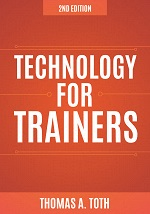ATD Blog
Breaking the Limits of Authoring Tools
Thu Oct 01 2015


“What is e-learning?” “It’s a PowerPoint deck with a quiz at the end of it.” Does this exchange sound familiar? In March of 2010, I started to experience a dilemma regarding the use of e-learning authoring tools. Clients were beginning to ask that I use a specific tool to build their e-learning projects. Until that point, they didn't seem to care; the final, SCORM-wrapped package was all that mattered. Program it in HTML? Flash? C++? As long as the final solution or offering worked in their LMS, the client was satisfied. Here was my dilemma: Do I advertise the specific authoring tools that I used—in an effort get more customer interest? Should I tell potential customers that I was capable of programming their content in Captivate or Lectora? Does it make me more marketable because I use these tools? Does it make me less of an e-learning programmer because I use authoring tools? Read that last sentence again: Does it make me less of an e-learning programmer because I use authoring tools? Fast-forward to 2015. Everyone seems to have their favorite authoring tool. What’s more, vendors are stepping up to deliver even more. In fact, I have consulted with organizations that are building the “Next Best E-Learning Authoring Tool” on the market—so I know what cool things are coming down the pike. And e-learning and training conferences host a multitude of hands-on sessions regarding these tools, and talk frequently about their benefits, features, and best practices. Fortunately, I jumped on the authoring tool bandwagon in a big way in 2012—or my business would have been negatively affected. But then, in addition to my original dilemma, I became concerned that with everyone using authoring tools, the profession would start turning out cookie-cutter solutions and simple interactions.
Would instructional designers start to dumb down their storyboards to suit documented functionality of a chosen tool?
Would companies simply import training PowerPoint decks and add quick voice-over explanations and a quiz and calling it e-learning?
Would course developers embrace the limitations of a specific tool rather than create e-learning programs that best supported learning goals—and potentially break the rules of what the tool could do?
I imagine that many of you have experienced a similar dilemma. This begs the question: Do you “program” e-learning courseware using an authoring tool, and do you find that you’re locked into the primary functions and capabilities of the tool—failing to bring in engaging, interactive elements?
All of this is to say: Is lousy e-learning simply the result of L&D professionals using authoring tools, or is it the outcome of developers failing to pair the full potential of these tools with all of the other programming expertise and learning tools at their disposal? What about video? What about original or adapted game elements? What about Flash or HTML 5 animations that can be built externally?
“What is e-learning?”
“It’s a PowerPoint deck with a quiz at the end of it.”
Is that how you want your e-learning projects described? Not likely. Instead, let’s commit to going beyond the limits of our authoring tools and incorporating additional elements that make our e-learning solutions extraordinary!
To learn how to use all the e-learning development weapons in your arsenal, check out Technology for Trainers, 2nd Edition. This updated ATD Press book guides technology-hungry trainers through e-learning development—without the jargon. With brand-new chapters on mobile devices, learning management systems, and e-learning development software, Technology for Trainers illuminates the techniques and processes needed to build any technology-based learning solution.
